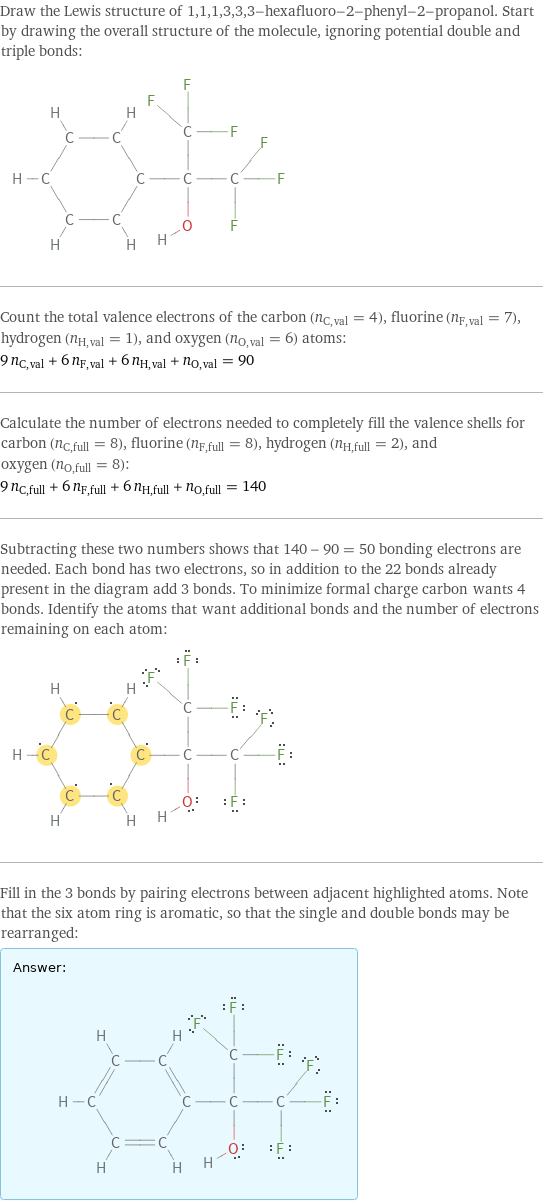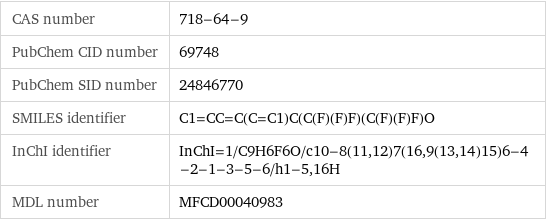Input interpretation

1, 1, 1, 3, 3, 3-hexafluoro-2-phenyl-2-propanol | phase | solid
Thermodynamic properties of matter

pressure | 1 atm
Lewis structure

Draw the Lewis structure of 1, 1, 1, 3, 3, 3-hexafluoro-2-phenyl-2-propanol. Start by drawing the overall structure of the molecule, ignoring potential double and triple bonds: Count the total valence electrons of the carbon (n_C, val = 4), fluorine (n_F, val = 7), hydrogen (n_H, val = 1), and oxygen (n_O, val = 6) atoms: 9 n_C, val + 6 n_F, val + 6 n_H, val + n_O, val = 90 Calculate the number of electrons needed to completely fill the valence shells for carbon (n_C, full = 8), fluorine (n_F, full = 8), hydrogen (n_H, full = 2), and oxygen (n_O, full = 8): 9 n_C, full + 6 n_F, full + 6 n_H, full + n_O, full = 140 Subtracting these two numbers shows that 140 - 90 = 50 bonding electrons are needed. Each bond has two electrons, so in addition to the 22 bonds already present in the diagram add 3 bonds. To minimize formal charge carbon wants 4 bonds. Identify the atoms that want additional bonds and the number of electrons remaining on each atom: Fill in the 3 bonds by pairing electrons between adjacent highlighted atoms. Note that the six atom ring is aromatic, so that the single and double bonds may be rearranged: Answer: | |
3D structure

3D structure
Basic properties

formula | C_6H_5C(CF_3)_2OH Hill formula | C_9H_6F_6O name | 1, 1, 1, 3, 3, 3-hexafluoro-2-phenyl-2-propanol IUPAC name | 1, 1, 1, 3, 3, 3-hexafluoro-2-phenylpropan-2-ol molar mass | 244.14 g/mol
Units

Chemical identifiers

CAS number | 718-64-9 PubChem CID number | 69748 PubChem SID number | 24846770 SMILES identifier | C1=CC=C(C=C1)C(C(F)(F)F)(C(F)(F)F)O InChI identifier | InChI=1/C9H6F6O/c10-8(11, 12)7(16, 9(13, 14)15)6-4-2-1-3-5-6/h1-5, 16H MDL number | MFCD00040983